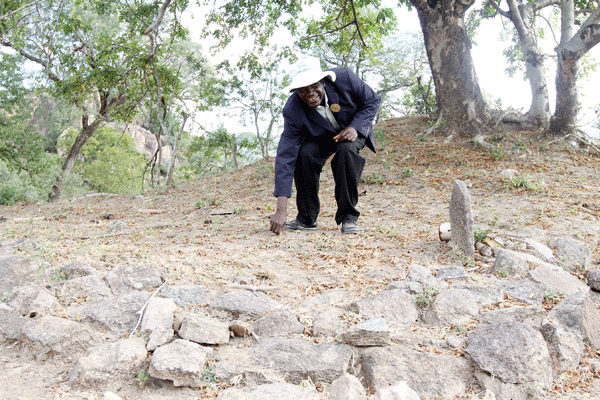
THE dirt road from Neshangwe Business Centre in Mwenezi stretches through the arid ward 5, where donkeys and goats compete to consume the little vegetation at the edges on the road in poverty-stricken Makotore village.
BY JAIROS SAUNYAMA

It is in this village, under Chief Neshangwe, that one finds Tsvimborume Dam and garden, which has become the talk of the district — thanks to the World Food Programme (WFP), who facilitated the construction of the dam and establishment of the nutritional garden.
What fascinates most visitors is how the area got its name — Tsvimborume.
The name was derived from a man called Fambirai Moyo, who once lived in the area, where his remains now lie interred on the hill at the garden’s entrance. It is said he never married.
The nutritious garden is located a few metres from the dam wall.
Headman Makotore, real name, Diamond Moyo told NewsDay Weekender that he felt honoured that the place was now called Tsvimborume because of Fambirai, whom he said was his great-grandfather.
“Fambirai was my relative. He is one of my forefathers. It is an honour to the clan and village to have this place being named after him, because he never got married,” he said.
- Chamisa under fire over US$120K donation
- Mavhunga puts DeMbare into Chibuku quarterfinals
- Pension funds bet on Cabora Bassa oilfields
- Councils defy govt fire tender directive
Keep Reading
According to Headman Makotore, Fambirai arrived in the place in 1912, from a distant area known as Chembazvi.
“He was a great hunter who came to this area from Chembazvi. He was was accompanied by his two brothers, Zvihana and Majiya,” he said.
“His brothers were all married and had children, but he did not have a wife, let alone a child. They settled in the mountains, but Fambirai later left them after his brothers’ wives teased him over his celibacy.
“He moved and settled near the river. As a great hunter, he kept on giving his siblings meat. Because he lived alone, people started calling him Tsvimborume, and the name became popular.”
However, the great hunter was later found dead in his hut and buried at the foot of the anthill.
“He lived for a long time, possibly more than 90 years. However, one day, one of his brothers’ wives sent a child to fetch fire and he found him dead. This area has been known as Tsvimborume since then and now that we have a dam and a big garden, they have also been named after him,” he said.
Meanwhile, Tsvimborume Dam and garden were projects completed through the 2015 cycle of WFP’s productive asset creation programme and is benefitting nine villages — Tsumele, Mavange and Duvai, among others. More than 592 households with a population of 2 239 and a total of 7 773 livestock are now benefitting from the weir.
Tsvimborume Dam was sited and pegged in 1995 by Agritex, but construction was stalled due to lack of resources.











